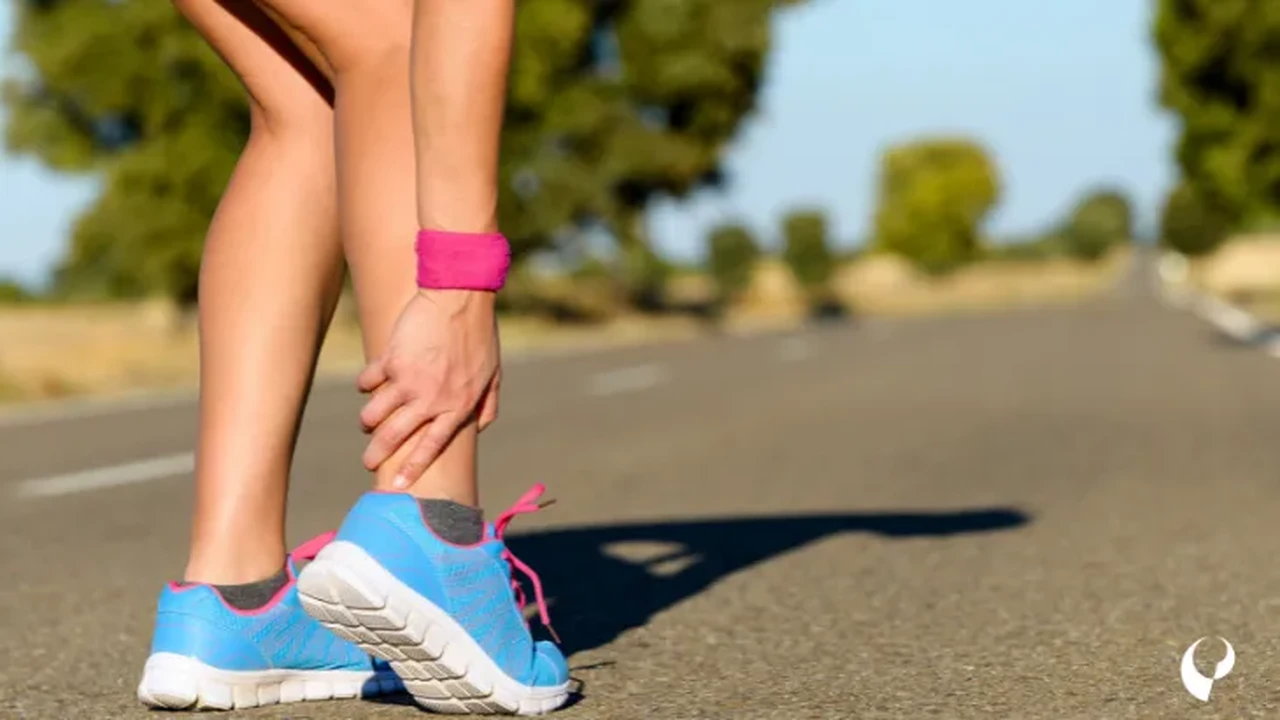Back and Neck Pain: When to See a Doctor

Understanding Back and Neck Pain Common Causes and Symptoms
Back and neck pain are incredibly common, affecting a vast majority of people at some point in their lives. Understanding the underlying causes and recognizing the symptoms is the first step towards effective management and recovery. Let's delve into some of the most frequent culprits behind this discomfort.
Muscle Strains and Sprains The Everyday Culprits
One of the most common causes of back and neck pain is muscle strain or sprain. These injuries often occur due to sudden movements, improper lifting techniques, or overuse. Imagine lifting a heavy box without bending your knees – that's a recipe for a back strain. Similarly, sleeping in an awkward position or spending hours hunched over a computer can lead to neck strain.
Symptoms of muscle strains and sprains typically include localized pain, stiffness, and muscle spasms. You might find it difficult to move your neck or back in certain directions. While these injuries can be quite painful, they usually resolve within a few weeks with rest, ice, and over-the-counter pain relievers.
Disc Herniation and Degeneration When the Cushioning Fails
Our spines are composed of vertebrae separated by intervertebral discs. These discs act as cushions, absorbing shock and allowing for flexibility. However, these discs can become damaged over time due to wear and tear or sudden injury. This can lead to disc herniation, where the soft inner material of the disc protrudes through the outer layer, potentially compressing nearby nerves.
Symptoms of disc herniation vary depending on the location and severity of the herniation. Common symptoms include radiating pain down the arm or leg (sciatica), numbness, tingling, and muscle weakness. In severe cases, disc herniation can even affect bowel or bladder control.
Disc degeneration, on the other hand, is a gradual process of wear and tear on the discs. As we age, the discs lose water content and become less effective at absorbing shock. This can lead to stiffness, pain, and increased susceptibility to injury.
Arthritis and Spinal Stenosis The Aging Spine
Arthritis, particularly osteoarthritis, is another common cause of back and neck pain, especially in older adults. Osteoarthritis involves the breakdown of cartilage in the joints, leading to pain, stiffness, and inflammation. In the spine, osteoarthritis can affect the facet joints, which connect the vertebrae.
Spinal stenosis is a narrowing of the spinal canal, the space that houses the spinal cord and nerves. This narrowing can put pressure on the spinal cord and nerves, causing pain, numbness, tingling, and weakness in the arms or legs. Spinal stenosis is often caused by osteoarthritis or other age-related changes in the spine.
Poor Posture and Ergonomics The Modern-Day Plague
In today's digital age, poor posture and ergonomics are significant contributors to back and neck pain. Spending hours sitting at a desk with poor posture, looking down at a phone, or carrying a heavy bag on one shoulder can all strain the muscles and ligaments in the back and neck.
Maintaining good posture involves keeping your spine aligned and your muscles balanced. When sitting, make sure your feet are flat on the floor, your knees are bent at a 90-degree angle, and your back is supported. When standing, keep your shoulders relaxed and your head aligned over your body. Regular stretching and exercise can also help to improve posture and prevent pain.
Trauma and Accidents The Unexpected Blow
Traumatic injuries, such as those sustained in car accidents, falls, or sports injuries, can cause significant damage to the back and neck. Whiplash, a common injury in car accidents, involves a sudden jolt to the head and neck, which can strain the muscles and ligaments in the neck.
Fractures of the vertebrae can also occur due to trauma. These fractures can be very painful and may require surgery to stabilize the spine. Spinal cord injuries are the most severe type of traumatic injury to the back and neck, and can result in paralysis or other neurological deficits.
Effective Pain Relief Strategies for Back and Neck Discomfort
When back and neck pain strike, finding effective relief is paramount. Fortunately, a variety of strategies can help manage pain and promote healing. Let's explore some of the most common and effective approaches.
Rest and Activity Modification Finding the Right Balance
In the initial stages of back or neck pain, rest is often recommended to allow the injured tissues to heal. However, prolonged bed rest can actually be detrimental, leading to muscle weakness and stiffness. The key is to find the right balance between rest and activity modification.
Avoid activities that aggravate your pain, such as heavy lifting, prolonged sitting, or repetitive movements. Instead, focus on gentle activities that promote circulation and flexibility, such as walking, swimming, or yoga. As your pain subsides, gradually increase your activity level.
Ice and Heat Therapy A Tale of Two Temperatures
Ice and heat therapy are simple yet effective ways to manage back and neck pain. Ice is typically used in the initial stages of injury to reduce inflammation and numb the pain. Apply an ice pack to the affected area for 15-20 minutes at a time, several times a day.
Heat, on the other hand, is used to relax muscles and improve circulation. Apply a heating pad or take a warm bath for 15-20 minutes at a time. Be careful not to burn yourself with heat therapy. Some people find that alternating between ice and heat provides the best relief.
Over-the-Counter Pain Relievers A First Line of Defense
Over-the-counter pain relievers, such as ibuprofen (Advil, Motrin) and acetaminophen (Tylenol), can be effective in managing mild to moderate back and neck pain. Ibuprofen is a nonsteroidal anti-inflammatory drug (NSAID) that reduces inflammation and pain. Acetaminophen, on the other hand, primarily relieves pain.
Follow the instructions on the label and be aware of potential side effects. If your pain is severe or does not improve with over-the-counter pain relievers, consult a doctor.
Prescription Medications When Stronger Relief is Needed
In some cases, over-the-counter pain relievers may not be sufficient to manage back and neck pain. In these situations, your doctor may prescribe stronger medications, such as prescription NSAIDs, muscle relaxants, or opioids.
Prescription NSAIDs are similar to over-the-counter NSAIDs, but they are typically stronger and may have different side effects. Muscle relaxants can help to relieve muscle spasms and stiffness. Opioids are powerful pain relievers that should be used with caution due to their potential for addiction.
Physical Therapy and Exercise Rehabilitation and Strengthening
Physical therapy and exercise are crucial components of back and neck pain management. A physical therapist can assess your condition and develop a personalized treatment plan that includes exercises to strengthen your muscles, improve your flexibility, and correct your posture.
Common exercises for back and neck pain include stretching, strengthening exercises, and core stabilization exercises. Your physical therapist will teach you proper techniques to ensure that you are performing the exercises correctly and safely.
Chiropractic Care Spinal Alignment and Manipulation
Chiropractic care focuses on the diagnosis, treatment, and prevention of musculoskeletal disorders, particularly those affecting the spine. Chiropractors use spinal manipulation, also known as adjustments, to restore proper alignment to the spine and reduce pain and inflammation.
Chiropractic care can be effective in managing certain types of back and neck pain, such as those caused by muscle strains, sprains, and disc problems. However, it is important to consult with a qualified and licensed chiropractor.
Alternative Therapies Exploring Complementary Approaches
Many people find relief from back and neck pain through alternative therapies, such as acupuncture, massage therapy, and yoga. Acupuncture involves inserting thin needles into specific points on the body to stimulate healing. Massage therapy can help to relax muscles, improve circulation, and reduce pain.
Yoga combines physical postures, breathing techniques, and meditation to promote relaxation and improve flexibility. These alternative therapies can be used as complementary approaches alongside conventional medical treatments.
Ergonomic Solutions for Back and Neck Pain Prevention
Preventing back and neck pain is often easier than treating it. Ergonomic solutions focus on designing workplaces and tasks to minimize strain on the body. By implementing ergonomic principles, you can significantly reduce your risk of developing back and neck pain.
Optimizing Your Workspace Desk Chair and Monitor Placement
Your workspace plays a crucial role in your posture and comfort. Start by ensuring that your desk chair is properly adjusted. Your feet should be flat on the floor, your knees should be bent at a 90-degree angle, and your back should be supported by the chair's backrest. The lumbar support should be positioned to support the natural curve of your lower back.
Your monitor should be positioned at arm's length and at eye level. This will help to prevent neck strain. If you use a laptop, consider using an external monitor and keyboard to improve your ergonomics.
Keyboard and Mouse Positioning Reducing Strain on Wrists and Arms
The position of your keyboard and mouse can also affect your comfort. Your keyboard should be positioned directly in front of you, with your wrists straight and your elbows close to your body. Use a wrist rest to support your wrists and prevent carpal tunnel syndrome.
Your mouse should be positioned close to your keyboard, so you don't have to reach for it. Consider using an ergonomic mouse that supports your hand and wrist in a more natural position.
Taking Regular Breaks Stretching and Movement
Sitting for prolonged periods can lead to stiffness and pain. Take regular breaks to stand up, stretch, and move around. Aim to take a break every 30 minutes. Simple stretches, such as neck rotations, shoulder rolls, and back extensions, can help to relieve tension and improve circulation.
Consider using a standing desk for part of the day. Standing can help to improve your posture and reduce strain on your back and neck.
Proper Lifting Techniques Protecting Your Spine
Lifting heavy objects improperly is a major cause of back pain. When lifting, always bend your knees and keep your back straight. Keep the object close to your body and avoid twisting your spine. If the object is too heavy, ask for help.
Use proper lifting techniques even when lifting light objects. Remember to bend your knees and keep your back straight.
Driving Ergonomics Maintaining Comfort on the Road
Driving for long periods can also contribute to back and neck pain. Adjust your seat so that your back is supported and your knees are slightly bent. Use a lumbar support cushion to provide extra support for your lower back.
Take regular breaks to stretch and move around. Avoid slouching while driving and maintain good posture.
Product Recommendations for Back and Neck Pain Management
Several products can help to manage back and neck pain and improve your overall comfort. Here are some recommendations, including their uses, comparisons, and pricing.
Ergonomic Office Chairs Supporting Your Spine
An ergonomic office chair is an investment in your health and well-being. Look for chairs with adjustable height, lumbar support, and armrests. Some popular options include:
* **Herman Miller Aeron:** Known for its exceptional comfort and adjustability. *Use:* Ideal for long hours of sitting. *Comparison:* High-end, durable, but expensive. *Price:* $1,500 - $2,000. * **Steelcase Gesture:** Offers a wide range of adjustments and supports various postures. *Use:* Suitable for dynamic work environments. *Comparison:* Versatile, comfortable, but pricey. *Price:* $1,200 - $1,800. * **Amazon Basics Ergonomic Office Chair:** A budget-friendly option with basic ergonomic features. *Use:* Good for occasional use or home offices. *Comparison:* Affordable, but less durable and adjustable. *Price:* $150 - $250.Lumbar Support Cushions Providing Lower Back Relief
Lumbar support cushions can provide extra support for your lower back and improve your posture. Consider these options:
* **LoveHome Memory Foam Lumbar Support Cushion:** Made from memory foam for customized support. *Use:* Provides lumbar support in office chairs, car seats, or wheelchairs. *Comparison:* Comfortable, affordable, but may flatten over time. *Price:* $20 - $30. * **ComfiLife Lumbar Support Back Pillow:** Features a contoured design for optimal support. *Use:* Suitable for various seating types. *Comparison:* Durable, supportive, but may be too firm for some. *Price:* $25 - $35.Adjustable Standing Desks Promoting Movement and Posture
Adjustable standing desks allow you to alternate between sitting and standing, promoting movement and improving posture. Here are some recommendations:
* **Vari Electric Standing Desk:** Easy to assemble and offers a smooth height adjustment. *Use:* Suitable for home or office use. *Comparison:* Sturdy, reliable, but can be expensive. *Price:* $600 - $900. * **FlexiSpot Electric Height Adjustable Desk:** A more affordable option with decent features. *Use:* Good for those new to standing desks. *Comparison:* Budget-friendly, but less durable than Vari. *Price:* $300 - $500.Neck Pillows Supporting Proper Alignment
Neck pillows can provide support for your neck while sleeping or traveling. Consider these options:
* **Tempur-Pedic Neck Pillow:** Made from memory foam for customized support. *Use:* Provides neck support while sleeping. *Comparison:* Comfortable, durable, but expensive. *Price:* $80 - $120. * **Travelrest Ultimate Travel Pillow:** An inflatable pillow that provides excellent neck support while traveling. *Use:* Ideal for long flights or car rides. *Comparison:* Portable, affordable, but may not be as comfortable as memory foam. *Price:* $30 - $40.Foam Rollers Releasing Muscle Tension
Foam rollers can help to release muscle tension and improve flexibility. Consider these options:
* **TriggerPoint GRID Foam Roller:** Features a textured surface for deep tissue massage. *Use:* Helps to release muscle knots and improve circulation. *Comparison:* Effective, durable, but can be painful for beginners. *Price:* $30 - $40. * **Amazon Basics High-Density Round Foam Roller:** A more affordable option for general use. *Use:* Good for beginners or those with sensitive muscles. *Comparison:* Affordable, but less effective for deep tissue massage. *Price:* $15 - $25.When to Seek Professional Medical Attention for Back and Neck Pain
While many cases of back and neck pain resolve on their own with self-care measures, it's crucial to know when to seek professional medical attention. Certain symptoms and situations warrant a visit to a doctor or other healthcare provider.
Severe Pain That Doesn't Improve With Self-Care
If your back or neck pain is severe and doesn't improve with rest, ice, heat, and over-the-counter pain relievers, it's time to see a doctor. Severe pain can indicate a more serious underlying condition that requires medical treatment.
Radiating Pain Numbness and Weakness
Radiating pain that travels down your arm or leg, accompanied by numbness or weakness, can be a sign of nerve compression. This could be caused by a herniated disc, spinal stenosis, or other conditions that require medical evaluation.
Loss of Bowel or Bladder Control
Loss of bowel or bladder control is a serious symptom that requires immediate medical attention. This can indicate a severe spinal cord injury or other neurological problem.
Fever and Unexplained Weight Loss
Back or neck pain accompanied by fever and unexplained weight loss can be a sign of infection or other serious medical condition. Seek medical attention promptly.
History of Trauma or Injury
If your back or neck pain is the result of a traumatic injury, such as a car accident or fall, it's important to see a doctor to rule out fractures, dislocations, or other serious injuries.
Pain That Worsens at Night
Pain that worsens at night, especially if it interferes with sleep, can be a sign of a more serious underlying condition, such as cancer or infection. Consult with a doctor to determine the cause of your pain.
Pain That Persists for More Than a Few Weeks
If your back or neck pain persists for more than a few weeks despite self-care measures, it's important to see a doctor to determine the underlying cause and develop an appropriate treatment plan.
Living a Pain-Free Life Strategies for Long-Term Management
Managing back and neck pain is not just about finding temporary relief; it's about adopting strategies for long-term management and prevention. By incorporating these practices into your daily life, you can significantly reduce your risk of experiencing chronic pain and improve your overall quality of life.
Regular Exercise Strengthening Your Core and Back
Regular exercise is crucial for maintaining a healthy back and neck. Focus on exercises that strengthen your core muscles, which support your spine. Examples include planks, bridges, and abdominal crunches. Also, incorporate exercises that strengthen your back muscles, such as rows and back extensions.
Maintaining a Healthy Weight Reducing Stress on Your Spine
Being overweight or obese puts extra stress on your spine, increasing your risk of back pain. Maintaining a healthy weight through diet and exercise can significantly reduce this stress and improve your overall health.
Practicing Good Posture Protecting Your Spine
Practicing good posture is essential for preventing back and neck pain. Be mindful of your posture throughout the day, whether you're sitting, standing, or walking. Keep your spine aligned and avoid slouching.
Managing Stress Reducing Muscle Tension
Stress can contribute to muscle tension, which can worsen back and neck pain. Find healthy ways to manage stress, such as exercise, yoga, meditation, or spending time in nature.
Getting Enough Sleep Allowing Your Body to Heal
Getting enough sleep is crucial for allowing your body to heal and repair itself. Aim for 7-8 hours of sleep per night. Create a relaxing bedtime routine to help you fall asleep and stay asleep.
Avoiding Smoking Protecting Your Discs
Smoking can damage the intervertebral discs and increase your risk of back pain. If you smoke, consider quitting. There are many resources available to help you quit smoking.
:max_bytes(150000):strip_icc()/277019-baked-pork-chops-with-cream-of-mushroom-soup-DDMFS-beauty-4x3-BG-7505-5762b731cf30447d9cbbbbbf387beafa.jpg)






